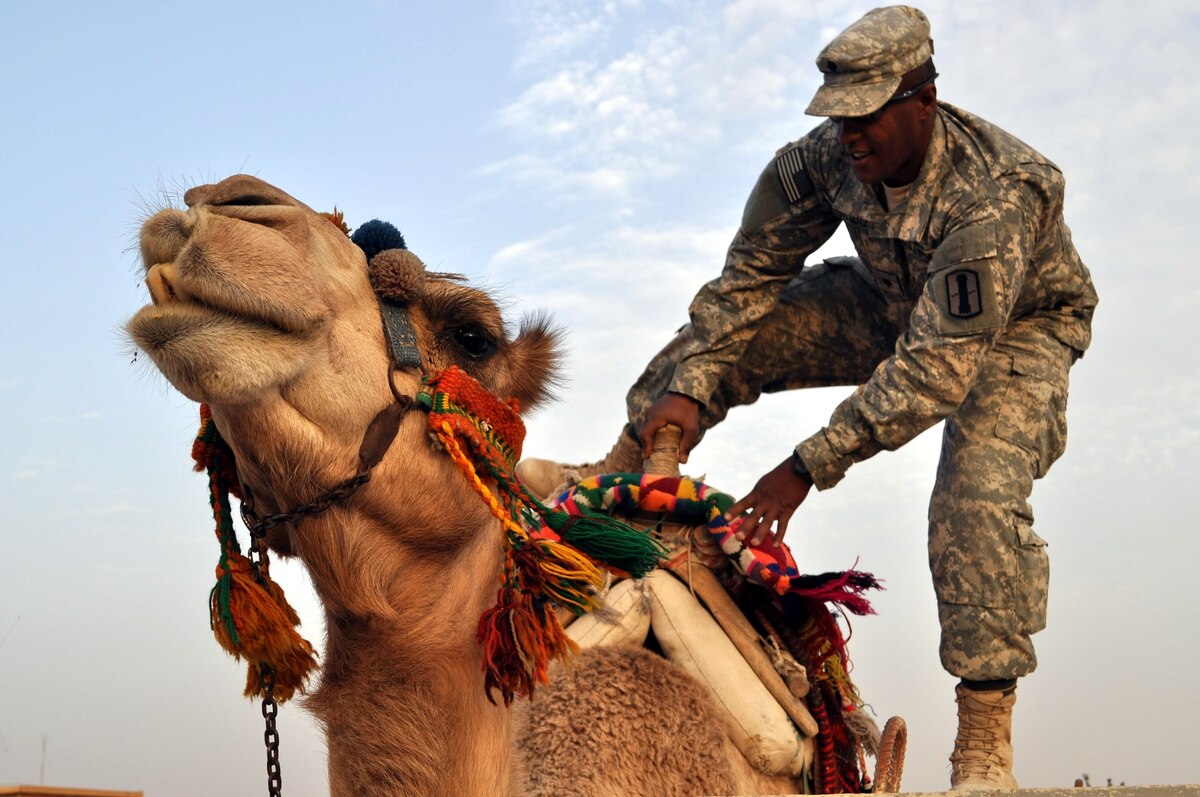Animal-human collaboration is an interesting facet of military history. The U.S. Navy has trained bottlenose dolphins and sea lions as part of its Marine Mammal Program. These slippery sea critters are able to locate mines and retrieve missing equipment more successfully than human divers, thanks to the dolphins’ sonar and sea lions’ eyesight. Forget robots — these mammals might be the ultimate choice to replace us.
However, a number of the military’s animal training programs have been complete and utter failures. In fact, you could say they’ve bombed — both literally and figuratively. From pigeon-controlled ordnance to shark suicide bombers, we’ve compiled a list of some of the worst animal experiments in U.S. military history.
5. U.S. Army Camel Corps
In 1855, Congress approved funding for military camel experiments. Two years later, after multiple trips to the Mediterranean region, the Army had 70 in its “Camel Corps” and quickly realized were essentially super horses. They did not need shoeing, could carry heavy loads and needed less food and water than other pack animals.
But the beginning of the Civil War brought the demise of the Camel Corps, as its major supporters were from the Confederacy. Additionally, the forces fighting the war relied on horses and mules. Sadly, this operation was never accepted by service members and the public barely knew it existed, let alone thought it was successful.
Most of the camels ended up in circuses or were turned loose to the wild. The last Army camel, Topsy, was reported dead in 1934, but unexplained camel sightings in the western U.S. continued for decades. Guess the Army couldn’t get over the 19th century hump using camels.
4. Bomb-sniffing Elephants
Just because this pachyderm project is a recent one doesn’t mean it was a good one. Elephants have an amazing sense of smell and have amazing memories, leading the Army to surmise they’d be perfect bomb sniffers.
Wrong.
Firstly, an African elephant can grow to be 30 feet long, 12 feet tall and weigh up to 13,000 pounds. Hence the phrase “elephant in the room.” These stats prove elephants are just too large. They’re also protected by the Endangered Species Act, so sending them into an active war zone to search for explosives wouldn’t exactly fly.
The Army ultimately decided to stick with man’s best friend, which is able to perfectly make its way through buildings and avoid crushing everything in the process of seeking out dangerous ordnance.
Too bad it took $50,000 to figure that out…
3. Project Pigeon
Amid the growing tensions of World War II, experimental psychologist B.F. Skinner found an unlikely candidate to fight the Nazis: pigeons.
To his credit, birds are able to maneuver the skies pretty well and get a better view of their targets. With a harness and Skinner’s food reward system, three pigeons would peck at a target on a screen. The pecks would then send electrical signals to the harness to steer the bomb.
On paper, the plan worked perfectly. However, in practice, the military was pretty nervous about this bird-brained idea. Therefore, the pigeons never got access to U.S. bombs during WWII, which is probably good for them seeing as it was essentially a suicide mission for the little winged warriors.
Skinner’s project was not all in vain, however. The touch screen display that the pigeons used to control their bombs was an early form of our touch screen devices, so you can think about that every time you tap away on your phone.
2. Operation X-Ray
Bats and bombs? What could go wrong! At least, that’s what dentist and inventor Lytle S. Adams thought in 1941 when he developed the idea to attach small timer-controlled bombs to bats to bomb the Japanese after they attacked Pearl Harbor. The goal was to release the bats and have them hide inside buildings where they would later explode.
Because Adams was a friend of First Lady Eleanor Roosevelt, her husband, President Franklin Roosevelt, pushed forth the plan saying this batty inventor was “not a nut” and that the plan was worth considering. The military (unfortunately) took his idea seriously and by 1943 began freezing thousands of Mexican free-tail bats into hibernation.
In initial tests, the bats did not behave as expected. First, the Army forgot that the bats needed time to thaw out from their hibernation and dropped five boxes of them to their death. In another test, the bat bombs worked… but that was only because a handful of them escaped testing and blew up an Army barracks, a control tower and other buildings at the Carlsbad Auxiliary Field.
After these road blocks, the Army decided to pass the project onto the Navy, which delegated it to the Marine Corps. Two million dollars and over 6,000 bats later, the Marine Corps dropped the plan in favor of the atomic bomb.
1. Project Headgear’s Shark Bombers
Taking the cake for the absolute worst military project featuring a team of animals is none other than the carnivorous king of the ocean — the shark! After World War II, the military tried to train sharks to deliver bombs. Unfortunately, sharks are not the most trainable animals.
Project Headgear trainers worked to attach a radio control system and explosives to the sharks and used five to 25 volt shocks to “guide” the sharks which (obviously) made them pretty angry.
What’s worse is that these weren’t merely cargo drop-off situations — the Navy was basically sending them as shark suicide bombers. Yikes.
The project ended in failure in 1971, but the Navy does have shark drones to do its bidding now. Do I sense a seventh Sharknado movie in the works? Frankly, Robosharknado sounds Oscar-worthy.
*Article originally published by Military Times, our sister publication.





